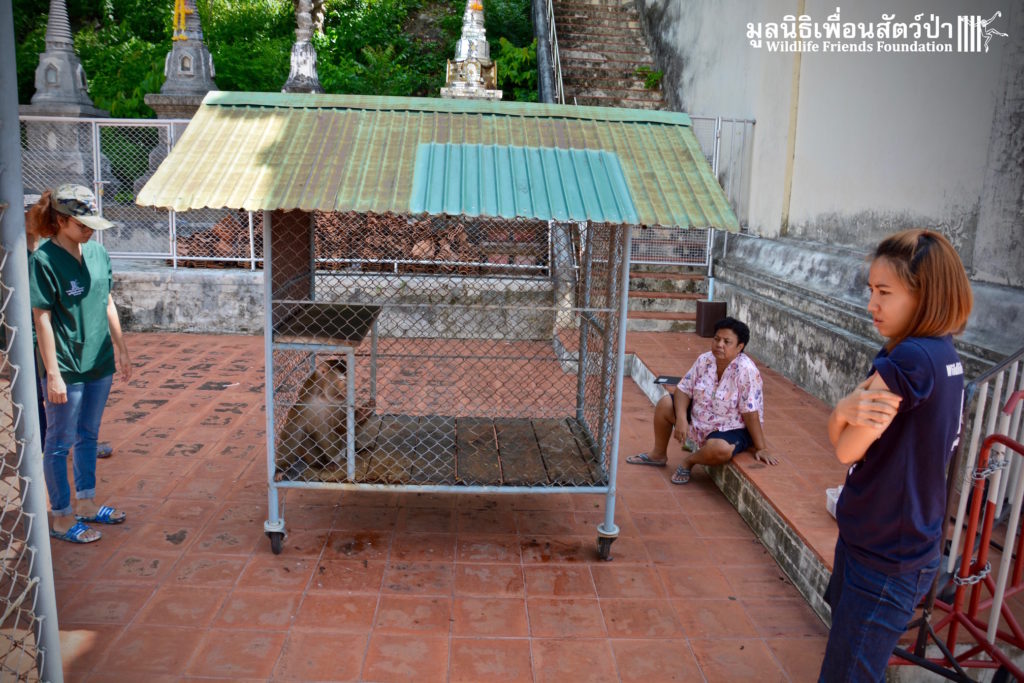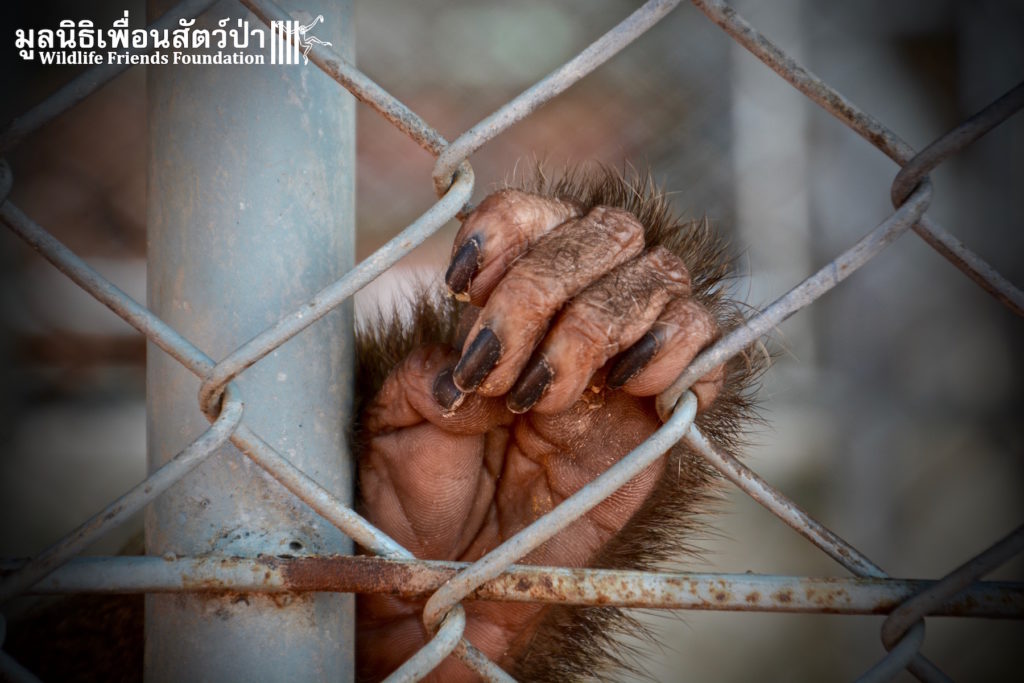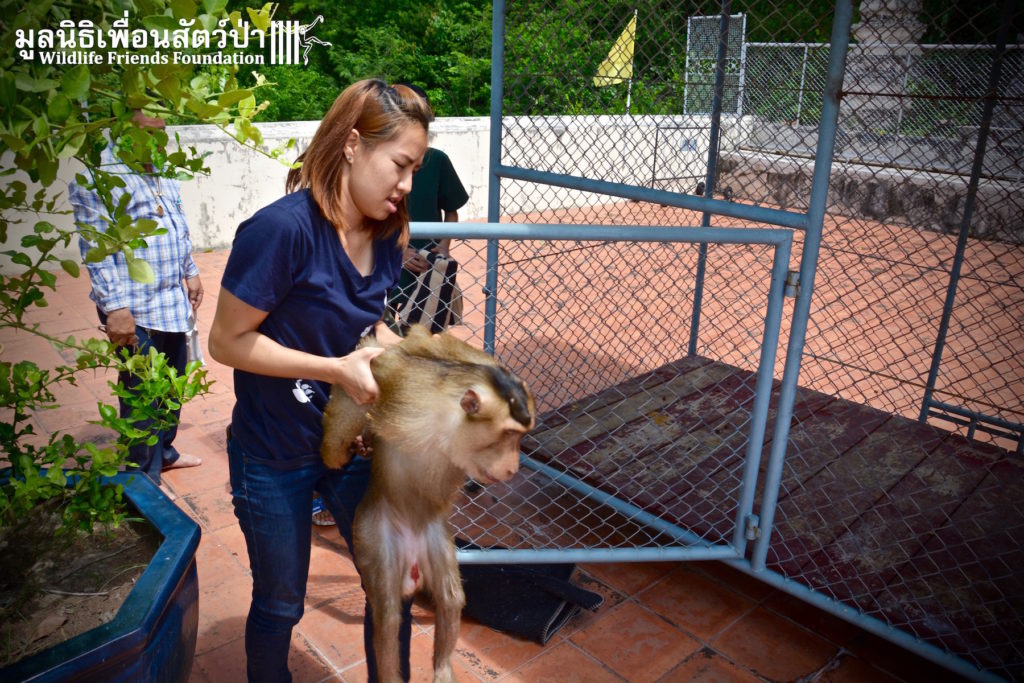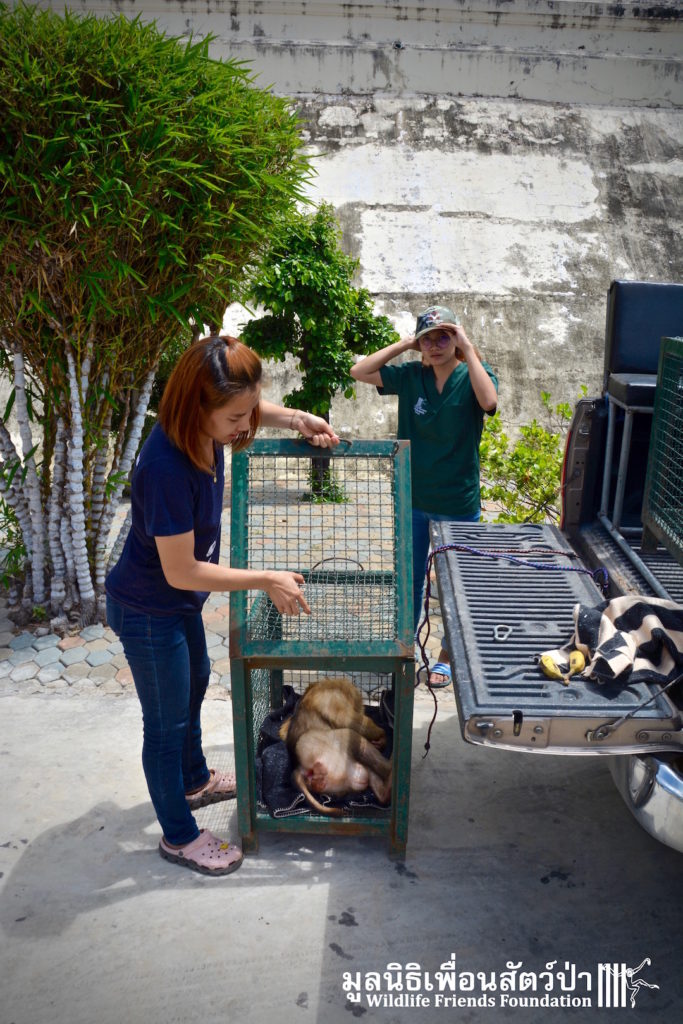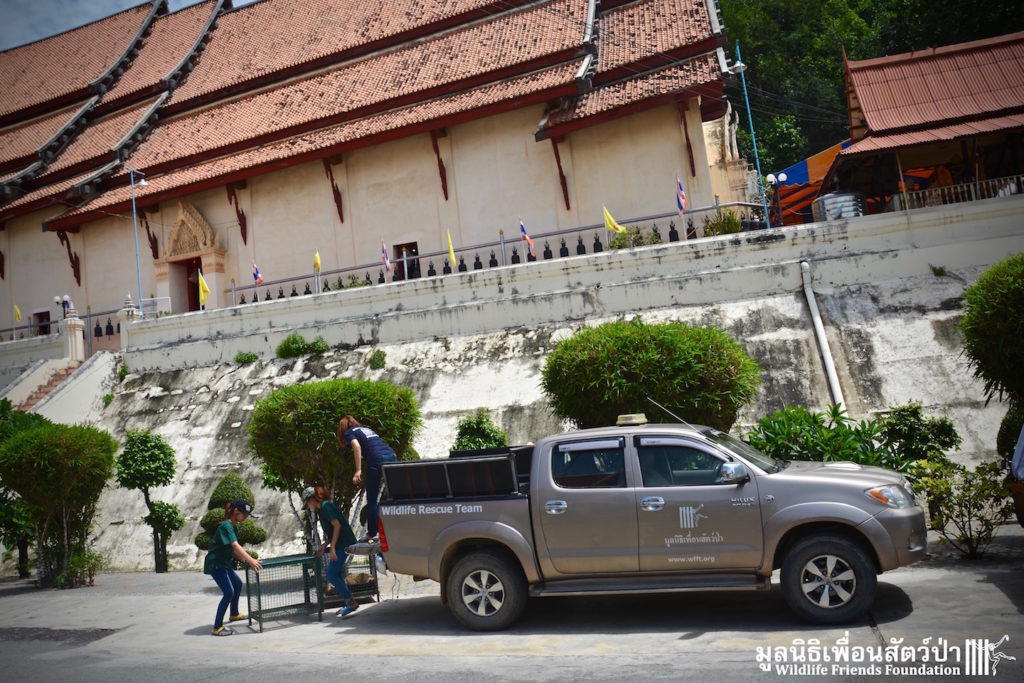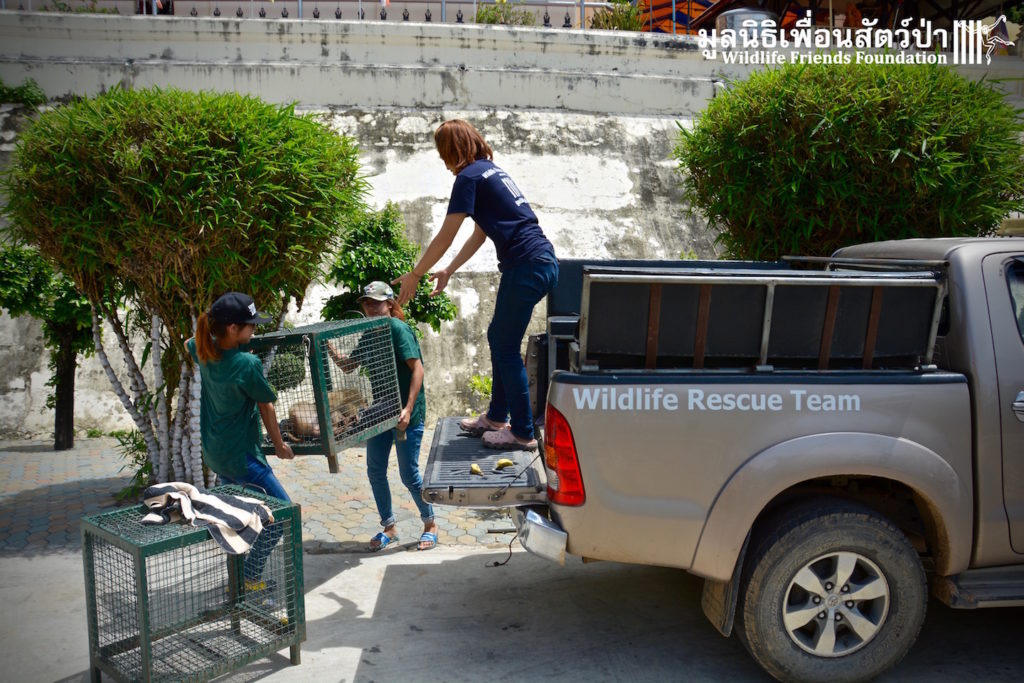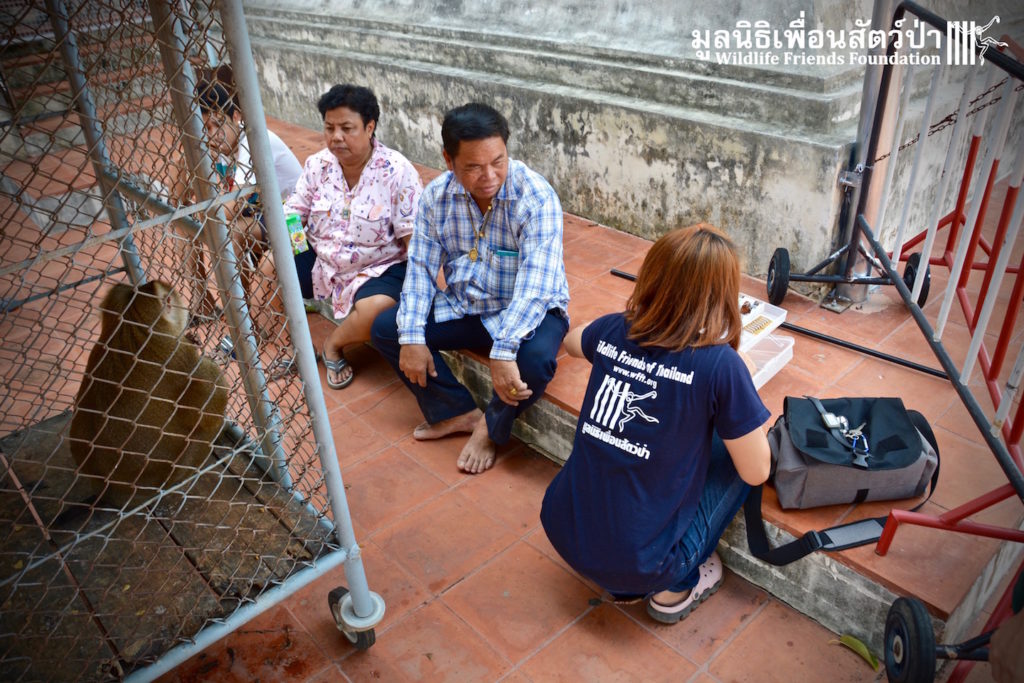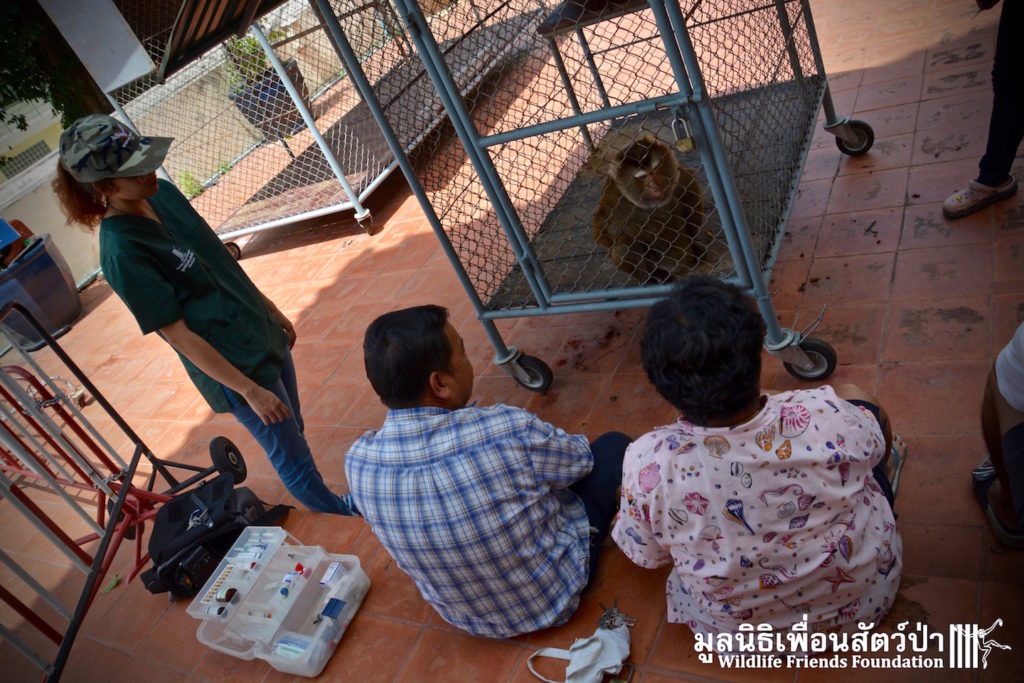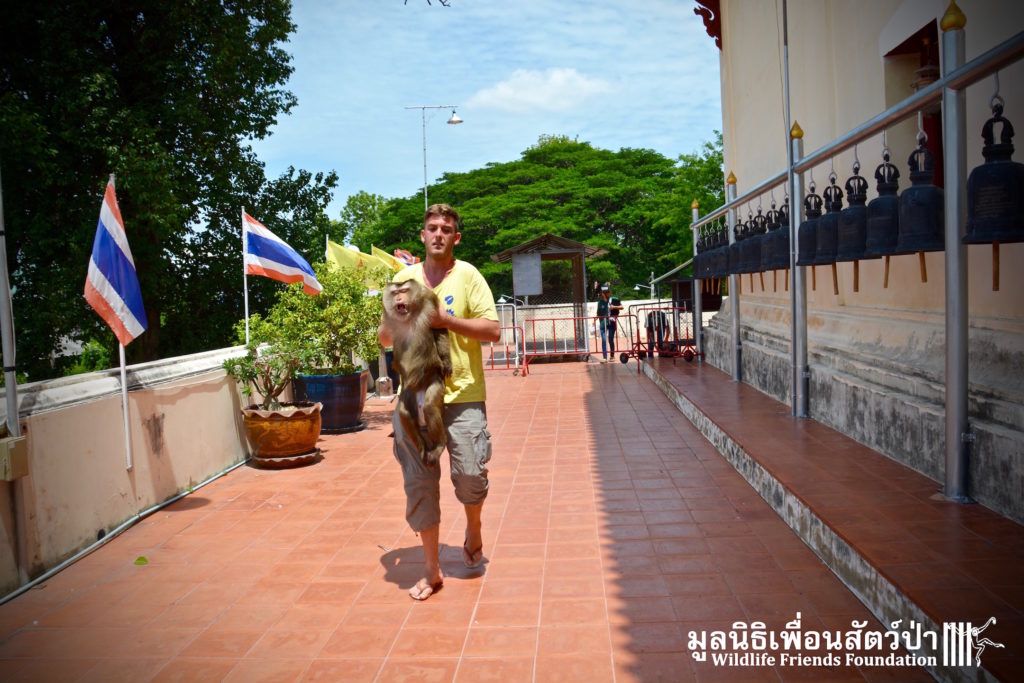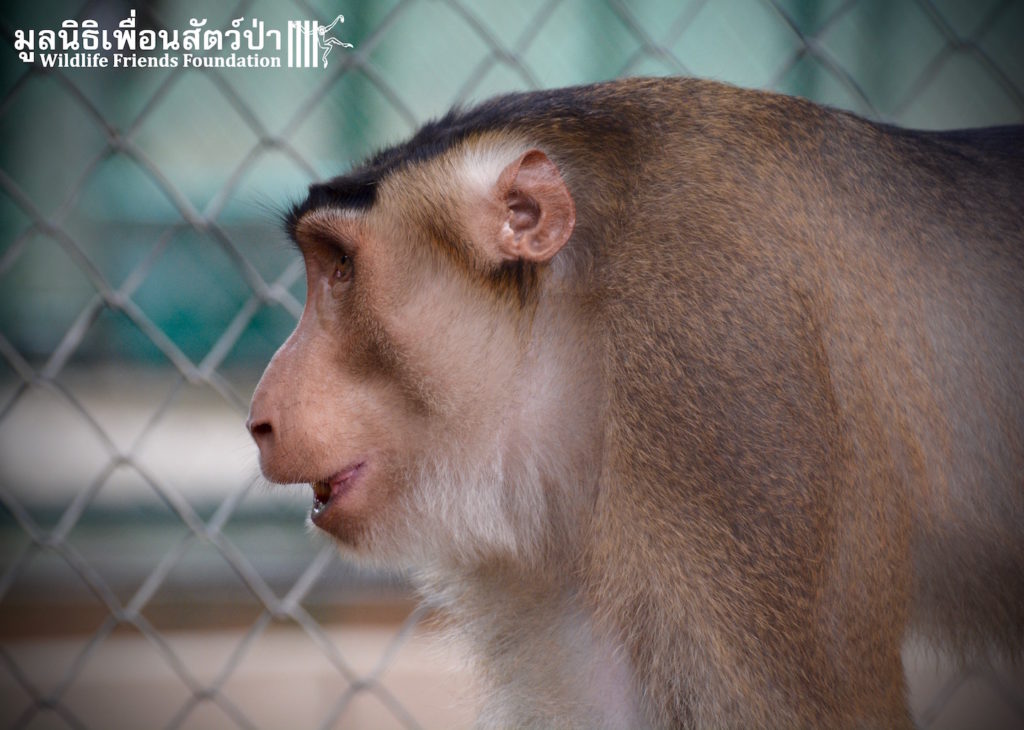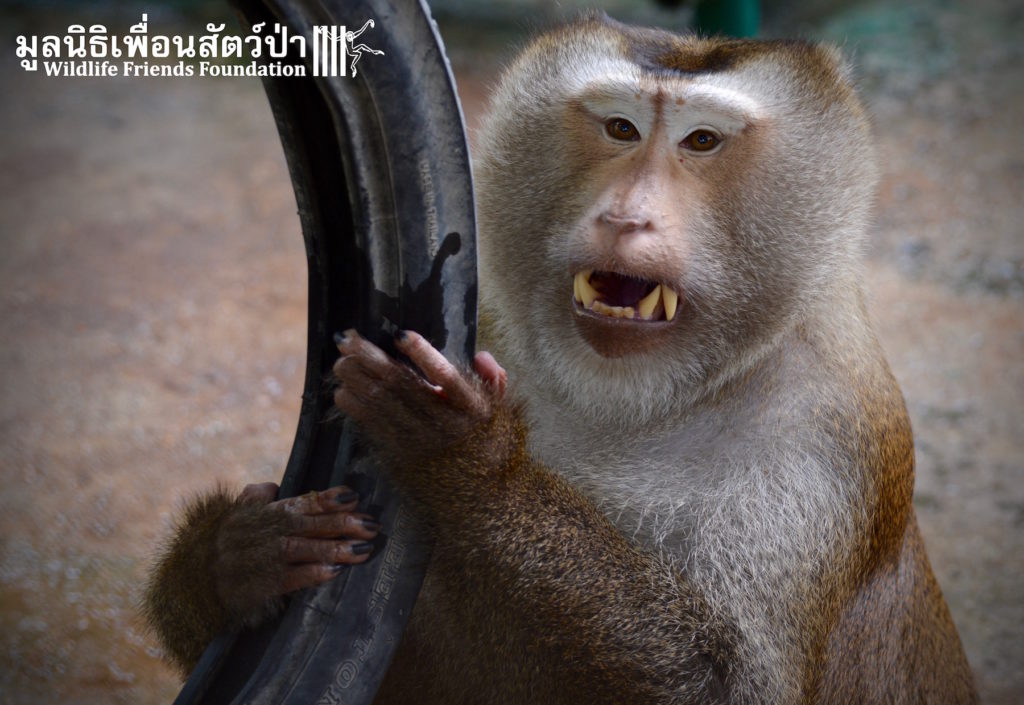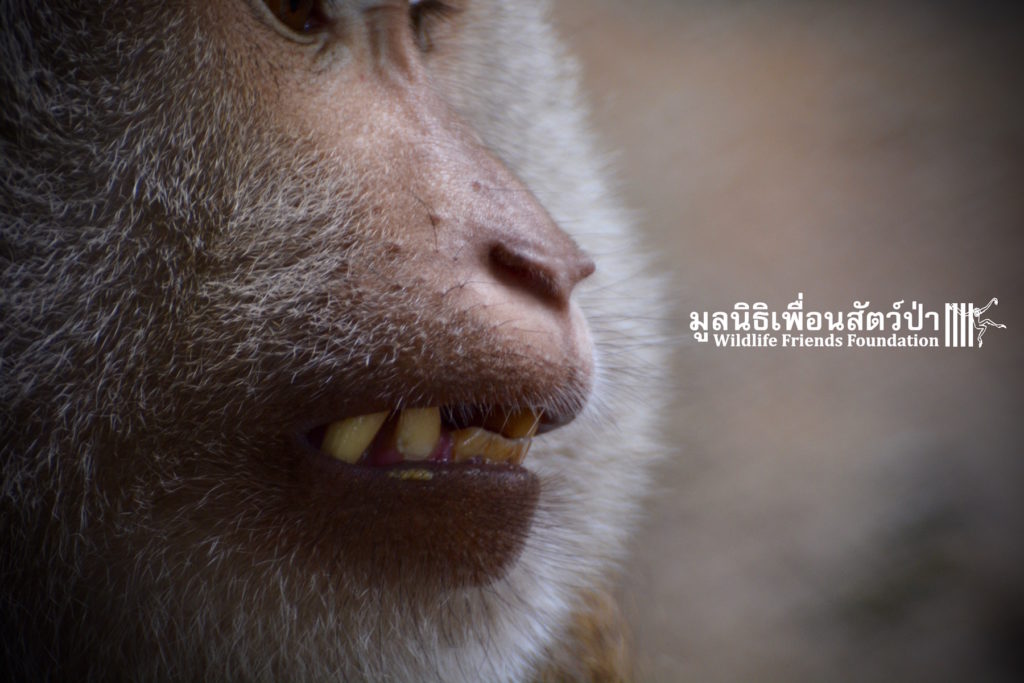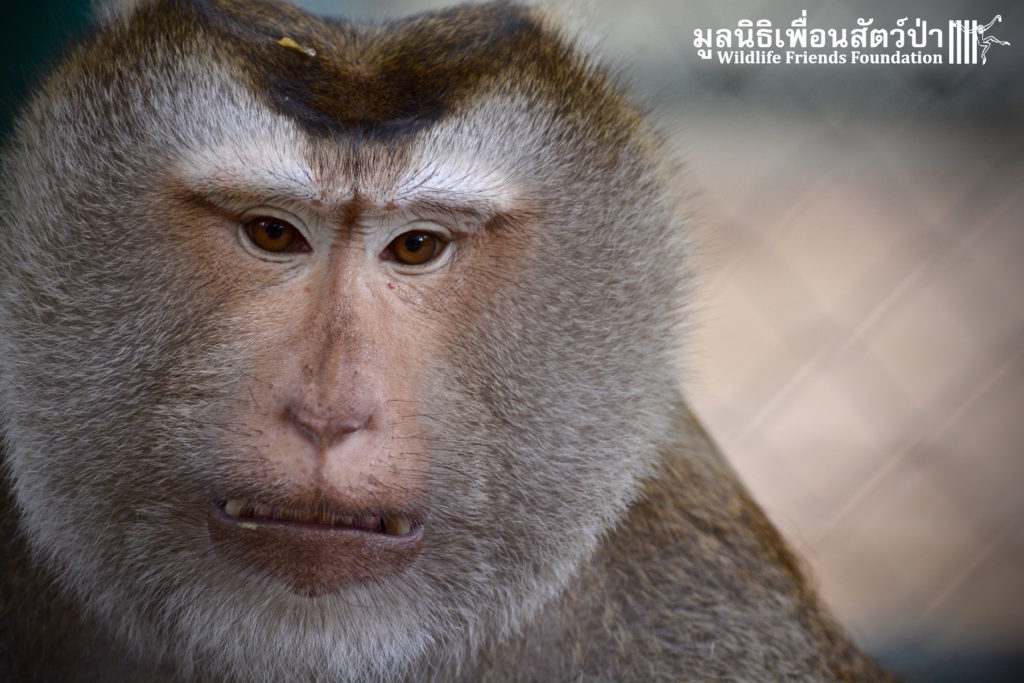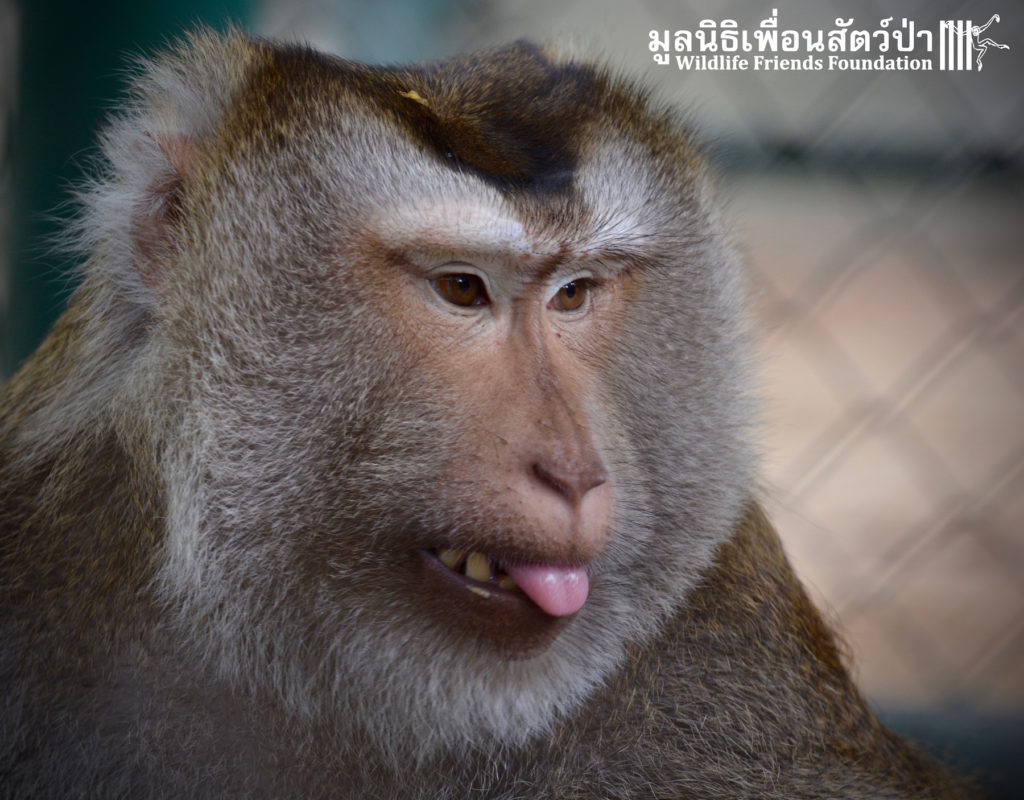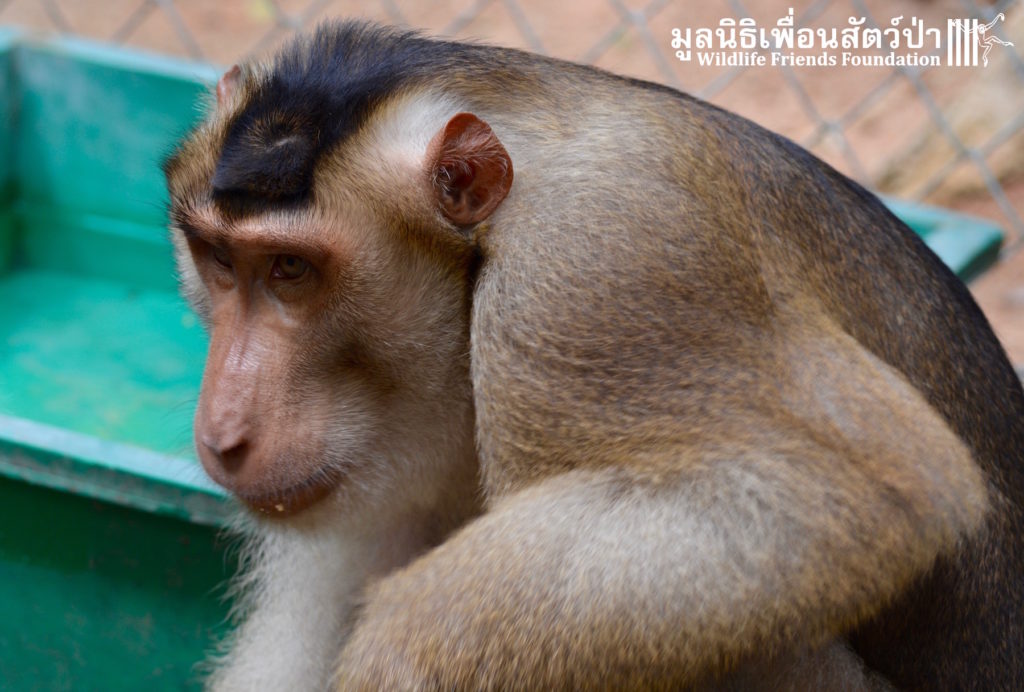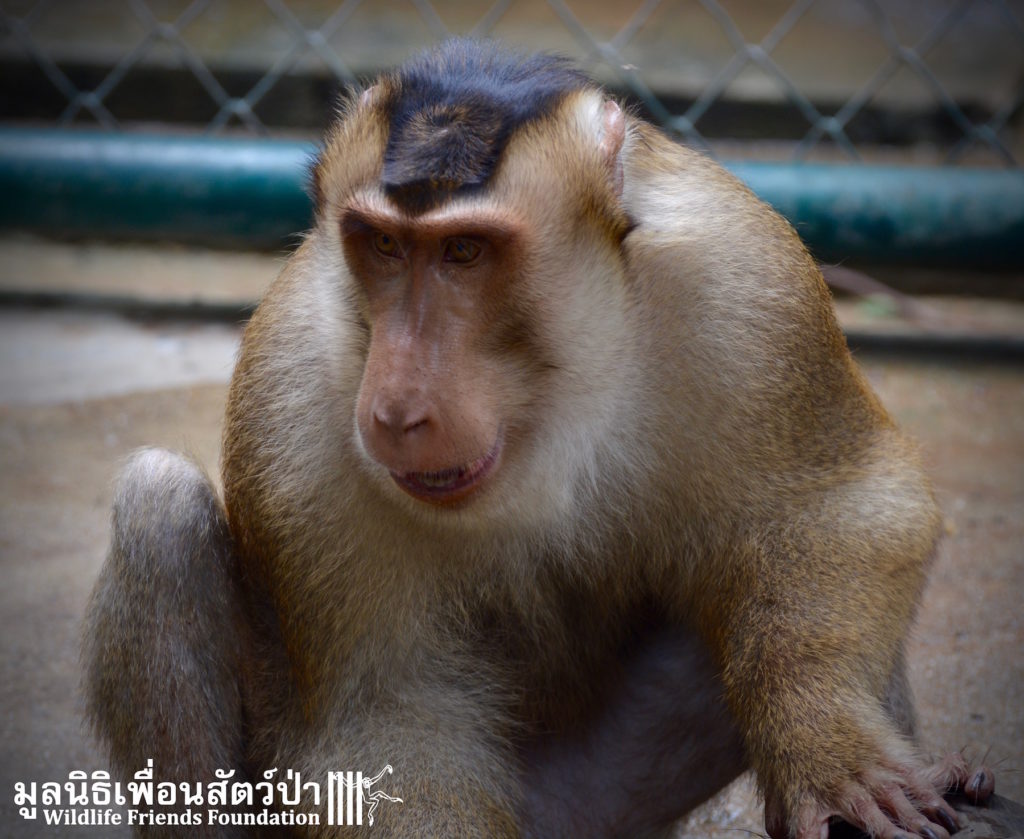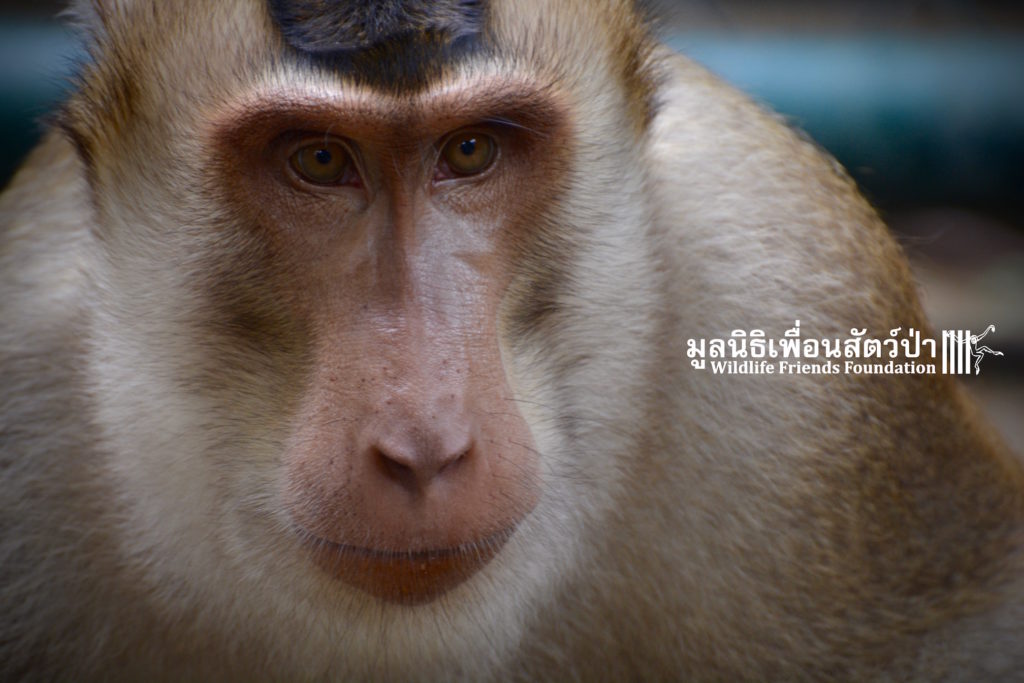WFFT's first-ever sugar glider: discover the devastating impact the wildlife trade is having on these incredible creatures
Meet Silver and Gold – Two Beautiful Big Boys
Two days ago we received a call from staff at a temple in Phetchaburi regarding two unwanted male macaque residents they could no longer care for, during the initial conversation we were informed that the macaques were both around two years old, and easy to handle. The WFFT Rescue Team headed out to investigate. Upon arrival this was not the case, the macaques in question are both strong and aggressive adult male pig-tailed macaques. ‘See Nguen’ (Silver) is an eight-year-old Southern pig-tailed macaque (Macaca nemestrina) and ‘Gold’ (See Thong) is a four-year-old Northern pig-tailed (Macaca leonina).
Both the Northern pig-tailed macaque and the Southern pig-tailed macaque are listed as Vulnerable (VU) by the IUCN Red List of Threatened Species as the populations have declined 30% in recent decades across the entire distribution range due to several threats, and this decline is predicted to continue at the same rate or higher over the next few decades. Habitat disturbances that affect this species’ survival include: selective logging; timber and firewood collection for making charcoal; building roads, dams, power lines; and deliberately setting fires. These threats lead to forest fragmentation and soil loss/erosion. These animals are hunted and traded for food, sport and traditional “medicine”, and accidental mortality due to trapping occurs. There is also trade for bones, meat for food and the live animals as pets. In Thailand, the males of this species are exploited for picking coconuts by the industry.
We were told that See Nguen’s previous owner had died when he was an infant, he was then released onto mountain area near the temple, he was then caught, and put in cage. We were told See Thong had been purchased as an infant for 15,000THB (425 USD) and handed over to temple when he was an infant. They have both been at the temple since infancy, spending years in the small barren cages you see in the pictures, with no regular access to drinking or proper diet. After further research about the history of these macaques we were told that they had been brought to the temple to be used as deterrents, to scare away groups of wild urban long-tailed macaques (Macaca fascicularis) that live close to the temple and often come into the temple to look for food. Clearly this did not work as wild long-tailed macaque were visible in the temple.
After being captured from the wild as infants and then sold on as pets or work animals these big boys can now have some peace and quite, and finally have a chance at a better life, with their own species. They are currently adjusting their new lives and are in the WFFT Quarantine Facility for the time being. We hope that in the future they will once again be able to mix with their own species after spending years in solitary confinement. We will keep you posted on there progress.

